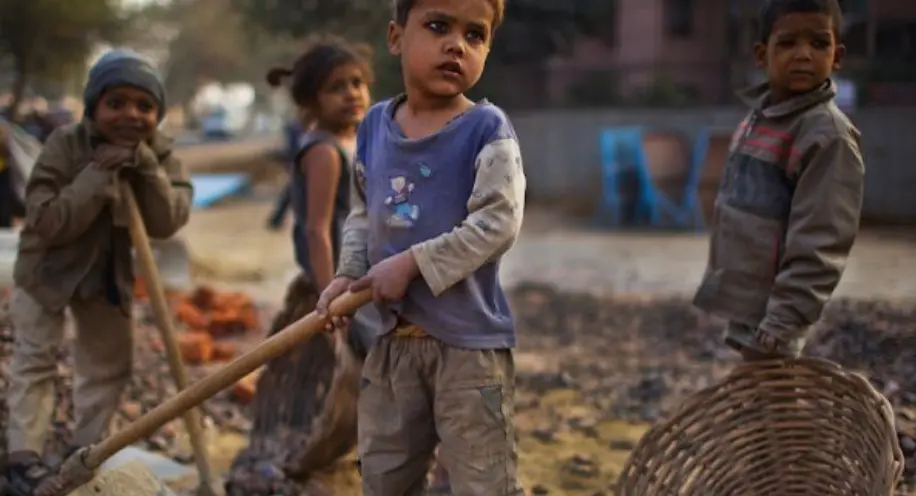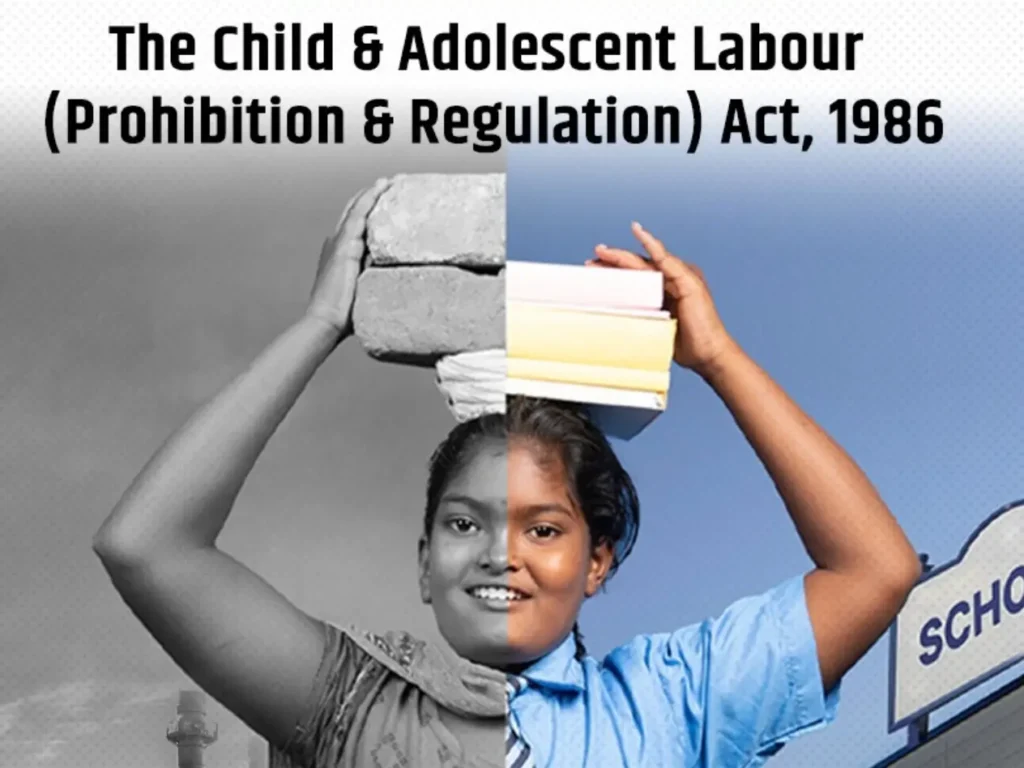Introduction
The Right Against Exploitation is enshrined in Articles 23 and 24 of the Indian Constitution. This right aims to eliminate all forms of exploitation and protect individuals, particularly the vulnerable sections of society, from practices like human trafficking, forced labour, and child labour. It is a fundamental right that stands as a safeguard against inhuman practices and ensures that every person, regardless of their background, is treated with dignity.
Article 23: Prohibition of Traffic in Human Beings and Forced Labor

Article 23(1) of the Indian Constitution explicitly prohibits human trafficking, begar (forced, unpaid labour), and all other forms of forced labour. It makes such practices a punishable offence under Indian law, aiming to protect individuals from exploitation.
Key Prohibited Practices under Article 23
1. Begar: This refers to involuntary, unpaid labour. Individuals, including citizens and non-citizens, are entitled to compensation for their labour. It prohibits compelling anyone to work without pay, except for public service.
2. Traffic in Human Beings: This includes the buying and selling of individuals as if they were commodities. The trafficking of women and children, particularly for immoral purposes such as prostitution, is addressed through this provision.
3. Forced Labor: This can be a physical compulsion or indirect coercion, such as compelling labour under extreme poverty. It includes forcing individuals to work against their will without proper remuneration.
Also Read: Right To Freedom (Article 19 to 22)
Important Case Laws
People’s Union for Democratic Rights v. Union of India (1982)
Commonly known as the Asiad Workers case, the Supreme Court held that non-payment of minimum wages amounted to forced labour under Article 23. The court declared that the right against forced labour is a fundamental right that can be enforced not only against the state but also against private individuals.
Bandhua Mukti Morcha v. Union of India (1984)
In this landmark case, the Supreme Court ruled that bonded labour is a form of forced labour and is violative of Article 23. The court emphasized that any public interest litigation to expose bonded labour should be seen as an opportunity for the government to eradicate such practices.
Deena alias Deen Dayal v. Union of India (1983)
The Supreme Court ruled that prisoners are entitled to be paid reasonable wages for any labour they perform. It held that unpaid labour by prisoners constitutes forced labour under Article 23.
Article 23(2): Exception for Public Service
Article 23(2) provides an exception, allowing the state to impose compulsory service for public purposes, such as national service during emergencies. However, this service must not discriminate on the grounds of religion, race, caste, or class.
Article 24: Prohibition of Child Labor

Article 24 prohibits the employment of children below the age of 14 in factories, mines, and any other hazardous employment. It seeks to ensure that children are not exploited for labour and that they are given opportunities for education and growth.
Key Features
• No child under 14 can be employed in hazardous work environments such as factories and mines.
• The objective is to curb child labour, ensuring children can enjoy their right to education under Article 21A.
Important Case Laws
People’s Union for Democratic Rights v. Union of India (1982)
In this case, the Supreme Court reinforced that Article 24 is a fundamental right enforceable against private entities. The court held that employing children in hazardous industries such as construction work is a violation of Article 24.
M.C. Mehta v. State of Tamil Nadu (1996)
The Supreme Court provided a detailed judgment, ruling that no child below 14 years should be employed in hazardous industries. The judgment laid down guidelines for protecting children’s economic and social rights, mandating the government to ensure their protection.
Significance of Articles 23 and 24
These articles are crucial in safeguarding individuals from exploitation, ensuring that their dignity is preserved. Article 23 targets systemic exploitation such as bonded labour and human trafficking, while Article 24 focuses on protecting children from hazardous labour, ensuring they have access to education and opportunities for growth.
By focusing on both adults and children, the Right Against Exploitation aims to create a fair and just society where all individuals can lead a life free from the burdens of exploitation. These provisions form the cornerstone of India’s commitment to human dignity and equality.
Conclusion
The Right Against Exploitation ensures that no one is subjected to inhuman practices like forced labour, human trafficking, and child labour. Through Articles 23 and 24, the Indian Constitution upholds the fundamental principle that every individual has the right to live with dignity, free from coercion and exploitation.
These rights are enforceable not just against the state but also private individuals, demonstrating the far-reaching scope of protection that the Indian Constitution provides. The state, through laws and its executive machinery, is responsible for ensuring these rights are upheld and for taking action against violations.
FAQs
1. What is begar under Article 23?
Begar refers to involuntary work or forced labor without payment. It is prohibited under Article 23 of the Indian Constitution, ensuring that no individual is compelled to work without receiving wages.
2. Does Article 23 only apply to state actions?
No, Article 23 applies to both state and private individuals. It ensures protection against exploitation from any source, making it enforceable against private citizens as well.
3. What is prohibited under Article 24?
Article 24 prohibits the employment of children below the age of 14 in hazardous industries, such as factories and mines. It aims to protect children from exploitation and ensure their right to education.
Also Read: Right To Equality Article 14 to 18
Reference: clc.gov.in